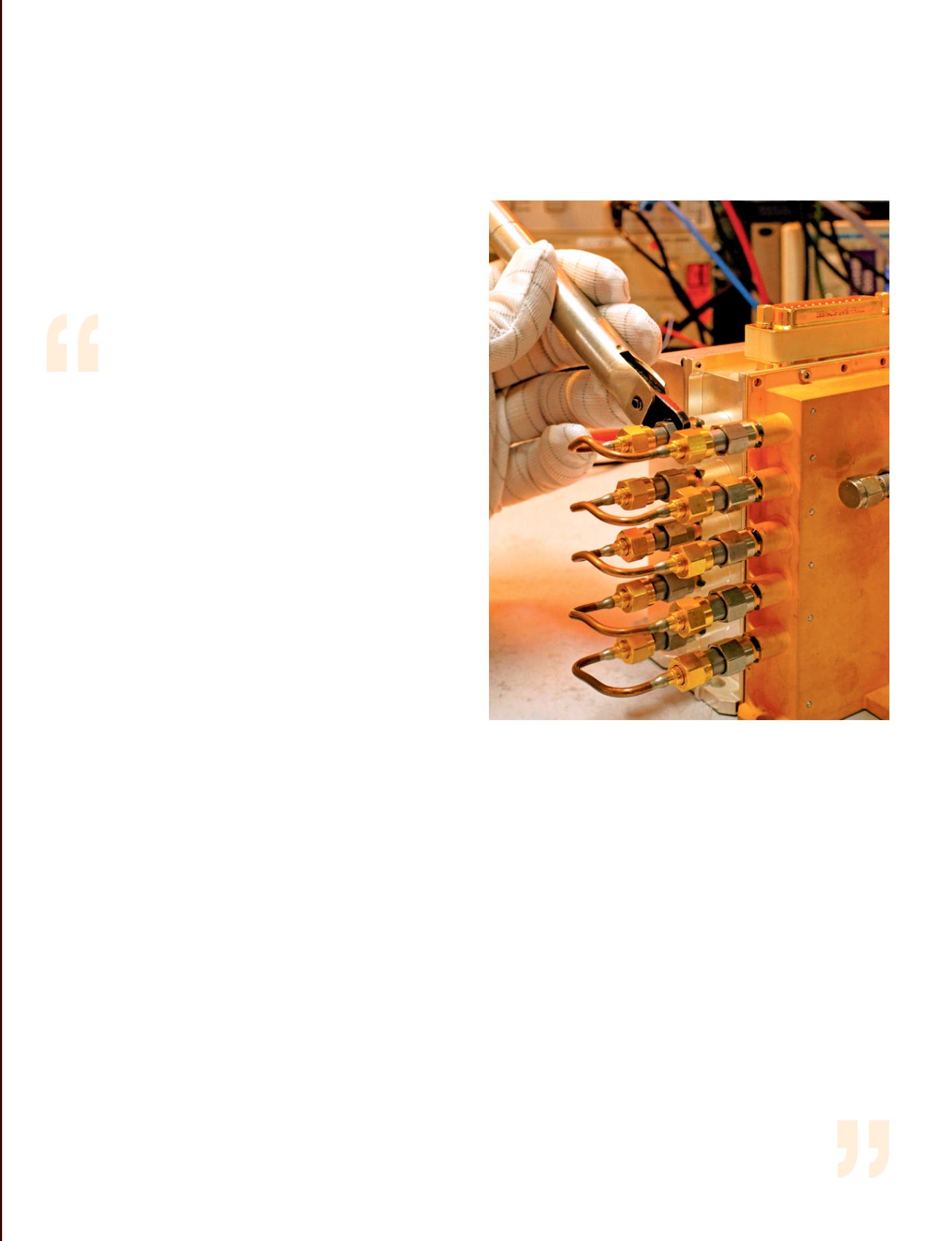
ARMC: space cooperation for development
Dr PETER MARTINEZ
Chairman, South African Council for Space Affairs
What is the genesis of African Resources Management
(ARM)?
F
our African countries, Algeria, Nigeria, Kenya and
South Africa have been working together since
2003 to establish a combined space asset that
collectively serves a unique need for regular up-to-date
monitoring of the African environment. The initiative
(initially only commercial) came from the successful
SunSat satellite programme of Stellenbosch University that
led to the creation of the SunSpace company. Then came the
idea of having a constellation of satellites to address Africa’s
development needs: the African Resources Management
Constellation (ARMC).
What is the goal of ARM?
ARM helps to provide easy access to satellite data for end
users in disaster management, food security, public health,
infrastructure, land use, and water resource management.
It thus supports urban development, mapping for the
surveillance of climate change effects and sustainable
development. Today Algeria is operating the Alsat-2A
satellite, Nigeria has recently put on orbit the NigeriaSat-X
and NigeriaSat-2 satellites and South Africa is preparing
the follow-on of Sumbandilasat satellite.
How is it managed?
The project gained political traction when the governments
of other countries started to become interested. The
concept is that participating countries will each contribute
one satellite to the constellation and will have access to
the other satellites from South Africa, Algeria and Nigeria.
At this stage, Kenya does not have an indigenous satellite
industry, thus is participating through its ground station.
In December 2009, the governments of the four participating
countries signed a memorandum of understanding (MOU). It
is stated that ARMC is open to other African countries, even if
they cannot participate to the space segment. It thus became a
project driven by intra-African cooperation considerations.
A steering committee was formed and workshops were
held. For example, in South Africa, a users group having
a need for earth observation data was constituted. All
their requirements were consolidated in a final set for the
ARMC. This document was shared with the other African
countries and they would go through the same process to
define their priorities.
What are the main advantages of such a structure?
Instead of having a dedicated satellite for each country,
the phase zero is that each country contributes capacity
on one satellite. And to start with, a certain fraction of
time dedicated to an existing or planned satellite would
be a country contribution to ARMC. As the constellation
becomes operational and a satellite needs to be replaced,
a country would build a fully dedicated satellite. This
would be the idea to realize the project in a faster way than
starting each with a dedicated satellite.
What is the future?
I see the benefits of ARMC considerably more than just
cooperating on a technical level. It is also to start growing
capacity in Africa, from a policy and regulatory level, in
the joint pursuit of space activity. The ARMC and the SKA
(Square Kilometre Array Telescope) are key projects for
defining intra-African cooperation.
There are discussions about establishing an African
space agency. My personal view is that, in the long run,
it is something to discuss, but in the medium term it is
a completely premature kind of activity. The reason being
that we do not have experience in the African
space community of having our industries
working together, addressing inter-operability.
Not to forget also the regulatory issues, data
sharing practices.
c
i
An observation satellite transmits images to the earth using an ‘image
telemetry’ subsystem that includes a modulator. Here, a modulator under
manufacturing;it is like that equipping the Alsat-2A satellite launched in 2010.
Thales Alenia Space © J.D. Dallet/Suds-Concepts
Space Tools - 35


